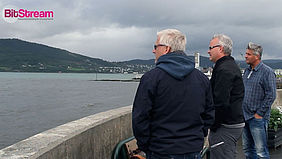BitStream II is one of the projects that are participating in the ARCTIC PACER clustering project. Funded by Botnia Atlantica programme, it has been built on the results of the BitStream ‘Capacity Building for Innovation’ project, in which business modelling was a central activity.
Partners explain that the experiences from BitStream show that innovation in public services requires detailed knowledge of businesses and the opportunities that the on-going digital transformation of society offers. Therefore, the main purpose of BitStream II is to meet the rising digitalization through close cross border co-operation in order to develop sustainable innovation capacity, more effective organization and challenge driven business development in public services.
The method that BitStream II uses allows different stakeholders to participate in a digitally based co-designing process of public services. It is based on four tools: Lean canvas, Mash-up, customer journeys and sensors that gather data on how citizens use public services, which then could be used to improve existing services or develop new ones. The method is being tested in Norsjö village (Sweden), where partners have set up a LoRaWan network that can be described as a star topology with gateways as bridges between sensors and a central server. The network covers a large part of the central village area (including, leisure areas, skiing and cross-training tracks, barbecue areas and areas for swimming and hiking). Partners have conducted three major tests of the LoRaWAN network: (1) Sensors placed at the cross-country skiing trail, (2) Sensors placed at the public bath, and (3) Sensors placed in four classrooms, and in the canteen at the local school. They have also developed visualizations of the sensor data with the purpose of communicating the information to the general public and creating a discussion about the quality of the services provided by Norsjö municipality.
This work is described in the articles Co-producing public value through IoT and social media and Challenges in using IoT in public spaces. These research papers of the project published in conferences are available through their publishers (due to copyright reasons), and public libraries that provides this kind of publications.
The partner organisations of BitStream II were:
- Umeå University, Västerbotten (Sweden)
- Umeå municipality, Västerbotten (Sweden)
- Norsjö municipality, Västerbotten (Sweden)
- Åsele municipality, Västerbotten (Sweden)
- The County Administrative Board of Västerbotten (Sweden)
- Nord University, Nordland (Norway)
- Bodø municipality, Nordland (Norway)
- Hemnes muncipality, Nordland (Norway)
- The Norwegian National Collection Agency, Nordland (Norway)

